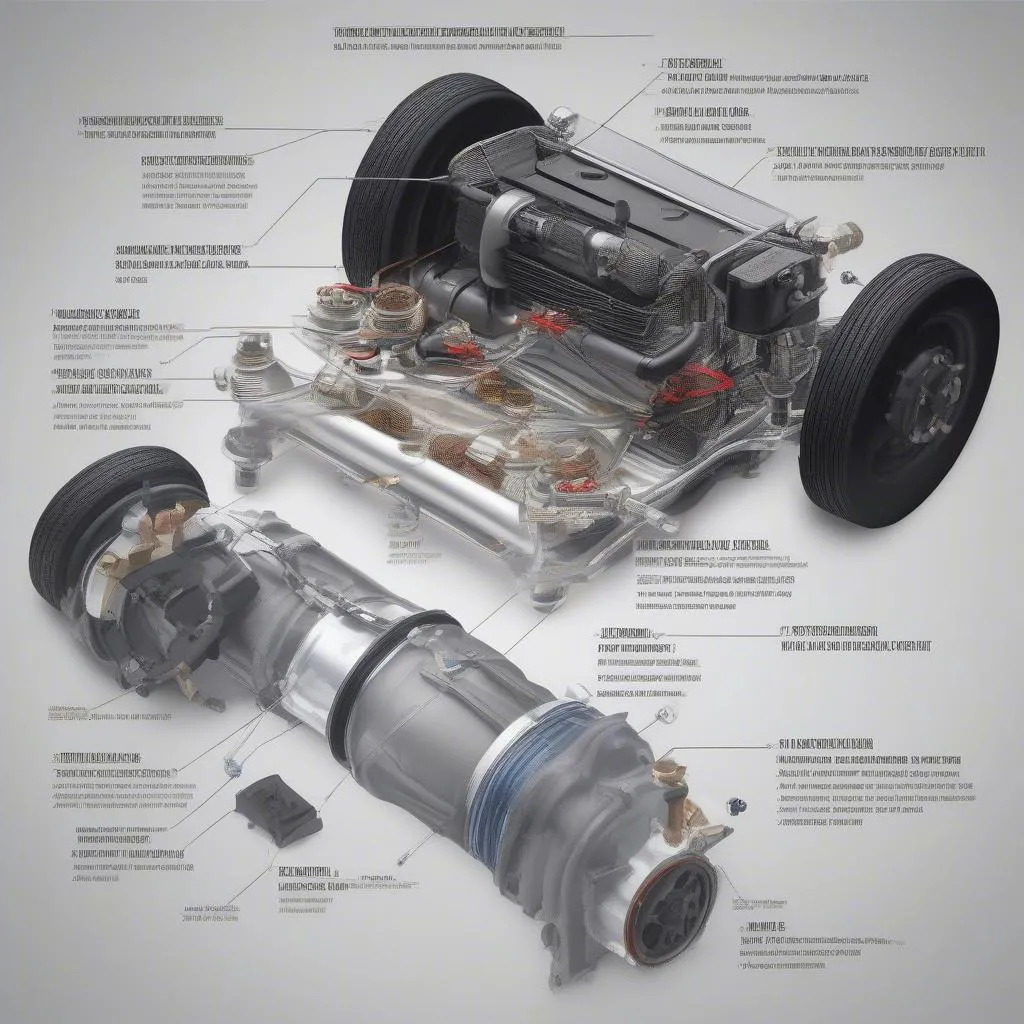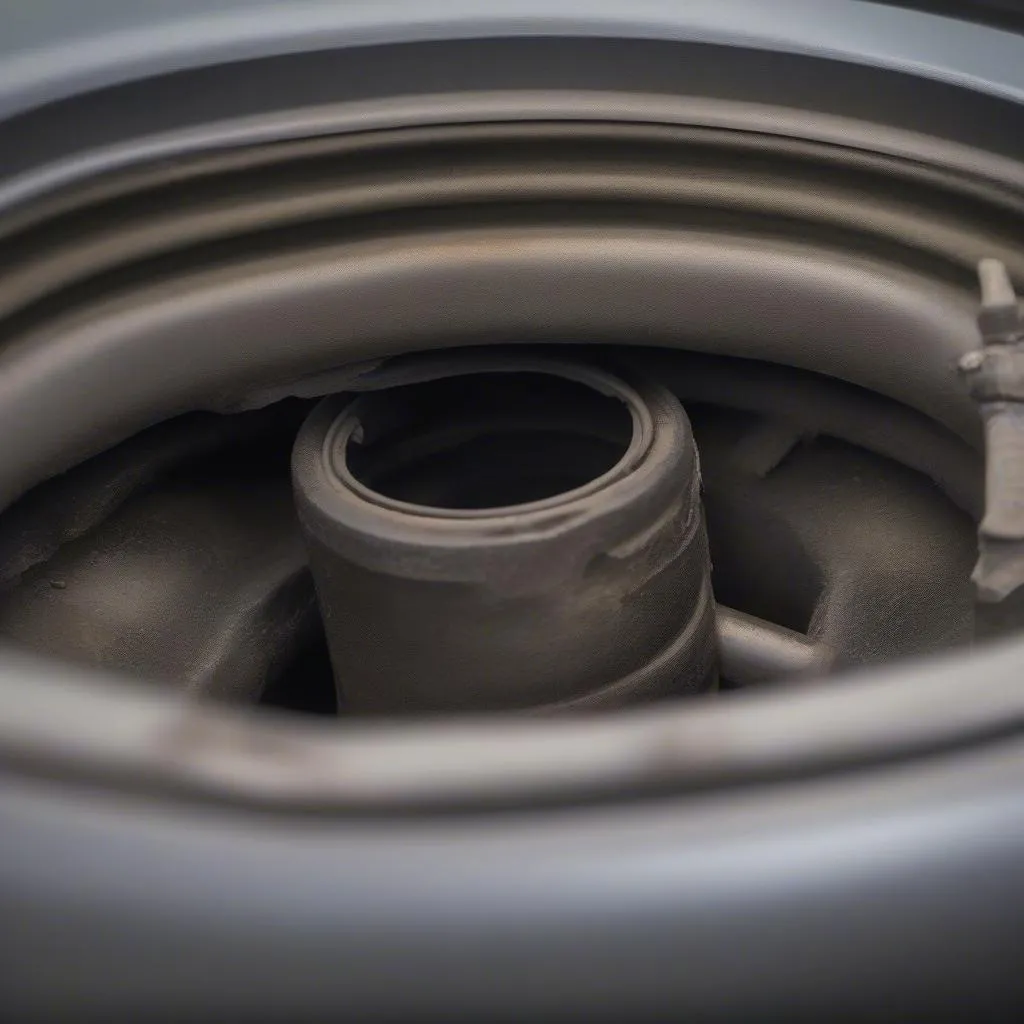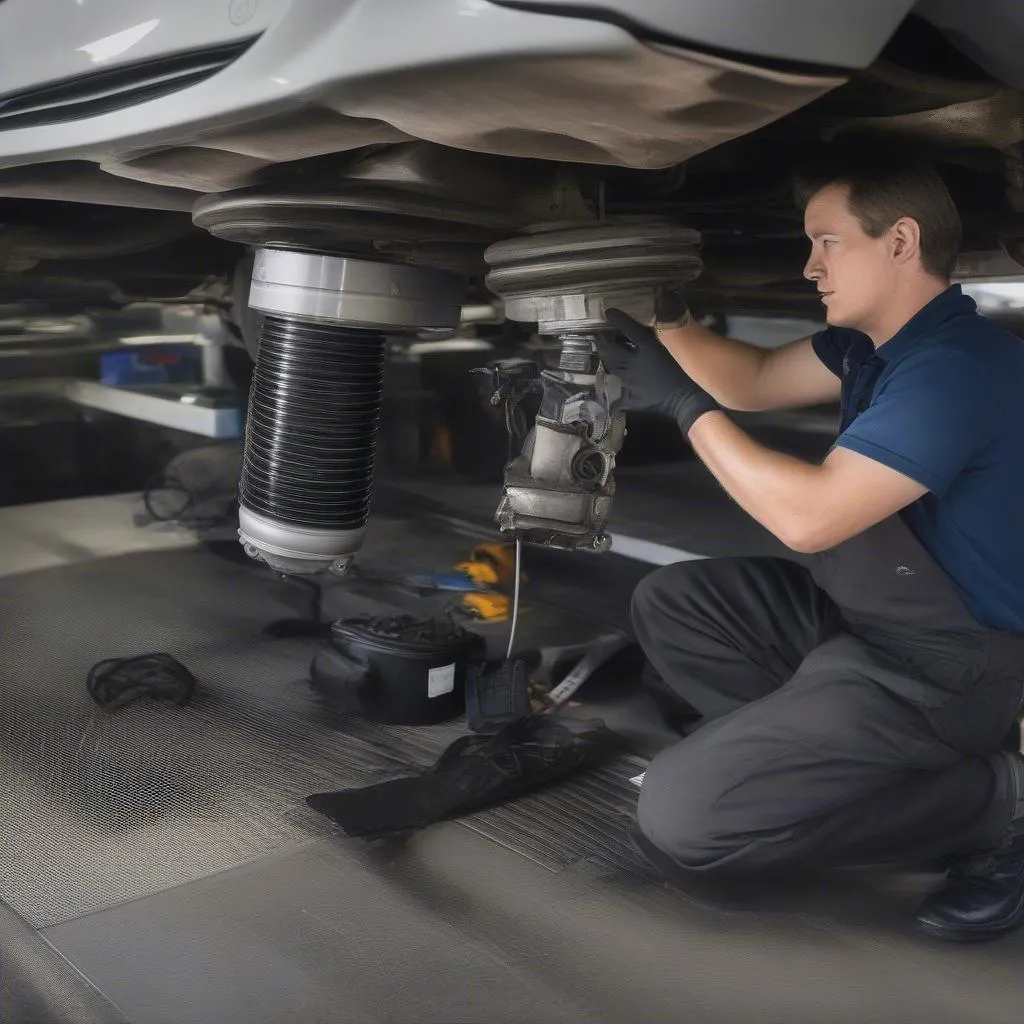Mercedes-Benz vehicles are renowned for their luxurious ride quality, largely attributed to their sophisticated air suspension systems. However, like any complex mechanical system, air suspension can develop issues over time. If you’re experiencing a bumpy ride, sagging suspension, or warning lights on your dashboard, this guide is for you. We’ll delve into the intricacies of fixing Mercedes air suspension, empowering you to diagnose and potentially resolve the problem yourself.
Understanding the Mercedes Air Suspension System
Before we dive into troubleshooting, it’s crucial to grasp the basics of how your Mercedes air suspension functions. Unlike conventional steel spring setups, air suspension utilizes rubber air springs, an air compressor, and various sensors and valves to adjust the ride height and damping. This intricate system allows for a smoother ride, enhanced handling, and even the ability to raise or lower the vehicle for different driving conditions.
 Mercedes Air Suspension Diagram
Mercedes Air Suspension Diagram
Common Mercedes Air Suspension Problems and Their Causes
A myriad of issues can plague a Mercedes air suspension system. Let’s explore some common culprits:
1. Air Leaks
Symptoms: One corner of the car sits lower than the others, hissing sounds from the suspension, compressor runs excessively.
Causes: Worn-out air springs, damaged air lines, leaking fittings. Air springs, being made of rubber, are prone to deterioration over time due to constant exposure to heat and road debris.
2. Faulty Air Compressor
Symptoms: Slow suspension rise time, compressor runs continuously but doesn’t inflate the suspension.
Causes: Worn-out compressor, electrical issues with the compressor relay or fuse.
3. Malfunctioning Sensors
Symptoms: Uneven ride height, suspension warning lights on the dashboard, erratic suspension behavior.
Causes: Failed height sensors, faulty pressure sensors, wiring issues.
4. Worn-Out Shocks/Struts
Symptoms: Bouncy ride, excessive body roll, clunking noises from the suspension.
Causes: Age, wear and tear, leaking seals within the shocks/struts.
 Worn Out Air Spring
Worn Out Air Spring
Diagnosing the Problem
Accurately pinpointing the source of your air suspension woes is paramount before attempting any repairs. Visual inspections can help identify obvious leaks or damaged components. However, a professional-grade OBD2 scanner like those offered by Cardiagtech can provide invaluable insight by reading error codes stored in your Mercedes’ onboard computer. These codes can pinpoint the exact sensor, valve, or component that’s acting up.
Expert Insight: “Using a quality diagnostic tool is crucial for efficient air suspension repairs,” says automotive engineer Dr. Emily Carter, author of “Modern Automotive Systems.” “It can save you hours of guesswork and potentially prevent unnecessary part replacements.”
How to Fix Mercedes Air Suspension
The complexity of repairs varies significantly depending on the root cause. Here’s a general overview:
1. Repairing Air Leaks:
- Locate the leak: This often involves spraying soapy water on suspected areas and looking for bubbles or using an air leak detector.
- Replace damaged components: This could involve new air springs, air lines, or fittings.
- Check and tighten connections: Loose fittings can also cause leaks.
2. Addressing Compressor Issues:
- Check the relay and fuse: These are common culprits and relatively easy to replace.
- Inspect for leaks in the compressor lines: Similar to air spring leaks, these can be found using soapy water or a leak detector.
- Replace the compressor: This is often a last resort but might be necessary if the compressor itself is faulty.
3. Handling Sensor Problems:
- Inspect wiring and connections: Damaged wires or loose connections can disrupt sensor signals.
- Test sensor functionality: This might involve using a multimeter or a specialized diagnostic tool.
- Replace faulty sensors: Fortunately, sensors are typically less expensive than major components like the compressor.
4. Replacing Shocks/Struts:
- Inspect for physical damage or leaks.
- Consider replacing in pairs: Even if only one shock/strut is bad, replacing them as a pair ensures balanced performance.
 Mercedes Air Suspension Repair
Mercedes Air Suspension Repair
When to Seek Professional Help
While some air suspension repairs are within the realm of DIY, others demand specialized knowledge and equipment. If you’re uncomfortable tackling complex repairs or lack the necessary tools, it’s best to consult a qualified Mercedes-Benz mechanic.
Frequently Asked Questions
Q: Can I drive my Mercedes with air suspension problems?
A: While you might be able to drive short distances, it’s not advisable. Driving with a faulty air suspension can worsen the damage and potentially lead to hazardous handling situations.
Q: How much does it cost to fix Mercedes air suspension?
A: Costs can range widely from under $100 for simple sensor replacements to over $1,000 for major repairs like a new compressor.
Q: Are there aftermarket air suspension kits available?
A: Yes, several aftermarket options often come at a lower cost than OEM parts. However, it’s crucial to choose reputable brands to ensure quality and compatibility. You can find helpful information and reviews on websites like CARDIAGTECH to make an informed decision.
Conclusion
Maintaining your Mercedes air suspension is essential for preserving the luxurious ride quality that defines these vehicles. While minor issues like air leaks or sensor problems might be manageable with some mechanical aptitude, more complex repairs are best left to the professionals. By understanding the common problems and utilizing the information provided in this guide, you can make informed decisions regarding your Mercedes air suspension and keep your ride smooth for years to come.


